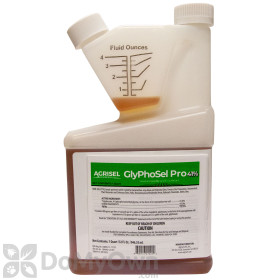Use Groundsel Killer Products

Groundsel weeds can pose a threat to livestock that may feed in areas where this winter weed grows. It also spreads broadly and easily and can choke out desirable plants in landscaped areas and gardens. Learn how to control a groundsel infestation and help your ornamental plants live a healthy weed-free life.
Apply a Pre-Emergent Weed Preventer
Reduce Groundsel Appearance with a Weed Preventer
Groundsel stalks produce large numbers of seeds from the yellow flowers and the puffy seedheads that appear later. The seeds from a groundsel weed plant are most often spread by the wind, but can travel in other ways, or remain dormant in the soil until exposed to enough sunlight and moisture to trigger their germination.
- Pre-emergent products should be applied before groundsel seed germination occurs. Your local extension office can give you tips on when to apply pre-emergents in your area.
- Choose a product labeled for control of groundsel.
- Pre-emergents applied to stop groundsel may need to be watered into the soil completely to activate their weed preventing properties. Read the entire label and follow directions carefully.
Some pre-emergent products are only labeled for use in specific grass types or land types. Always check the label before purchasing an herbicide to make sure it's labeled for use with your lawn type or land usage when considering how to treat for groundsel. For example, not all herbicides are suitable for use in areas where livestock may graze.
Products needed for Step 1
Apply a Post-Emergent Groundsel Herbicide
Knock Down Sprouted Groundsel Weeds with a Weed Killer
Hand pulling or using a hoe to remove existing groundsel weeds on your property can greatly reduce the threat of future groundsel weed spread, but a post-emergent herbicide may be needed if an infestation is extensive.
Groundsel weeds found in residential landscaped areas can be treated with products containing glyphosate or diquat. Some examples of products we recommend are shown below.
If the groundsel weeds are growing around edible crops and require an herbicide treatment to gain control, glyphosate products may be used, and those applications should be made with care. Follow the instructions found on the product label and use a sprayer tip that allows for avoiding contact with any nearby desirable plants. Certain organic herbicides are another option if there are edible plants nearby.
Post-emergent herbicides fall into two main groups: selective and non-selective. Consider the area that requires treatment and decide which type of product would work best for you.
- Selective Herbicides can be used without threat to other nearby desirable plants thanks to their formulations that prevent injury to non-weed plants.
- Non-Selective Herbicides will kill any plant in the area where they are applied and must be used with care to avoid injury to desirable plants and crops.
There are post-emergent herbicides of both types that are safe to use on areas where grazing occurs or where edible plants are grown, but label instructions must be followed carefully for every application. Always read the label completely and contact the manufacturer if you have questions about whether a product is right for your needs.
Products needed for Step 2
If you have any questions about the methods recommended in this guide or the products needed to control and kill groundsel weeds, give our lawn care experts a call at 866-581-7378 or email [email protected].









